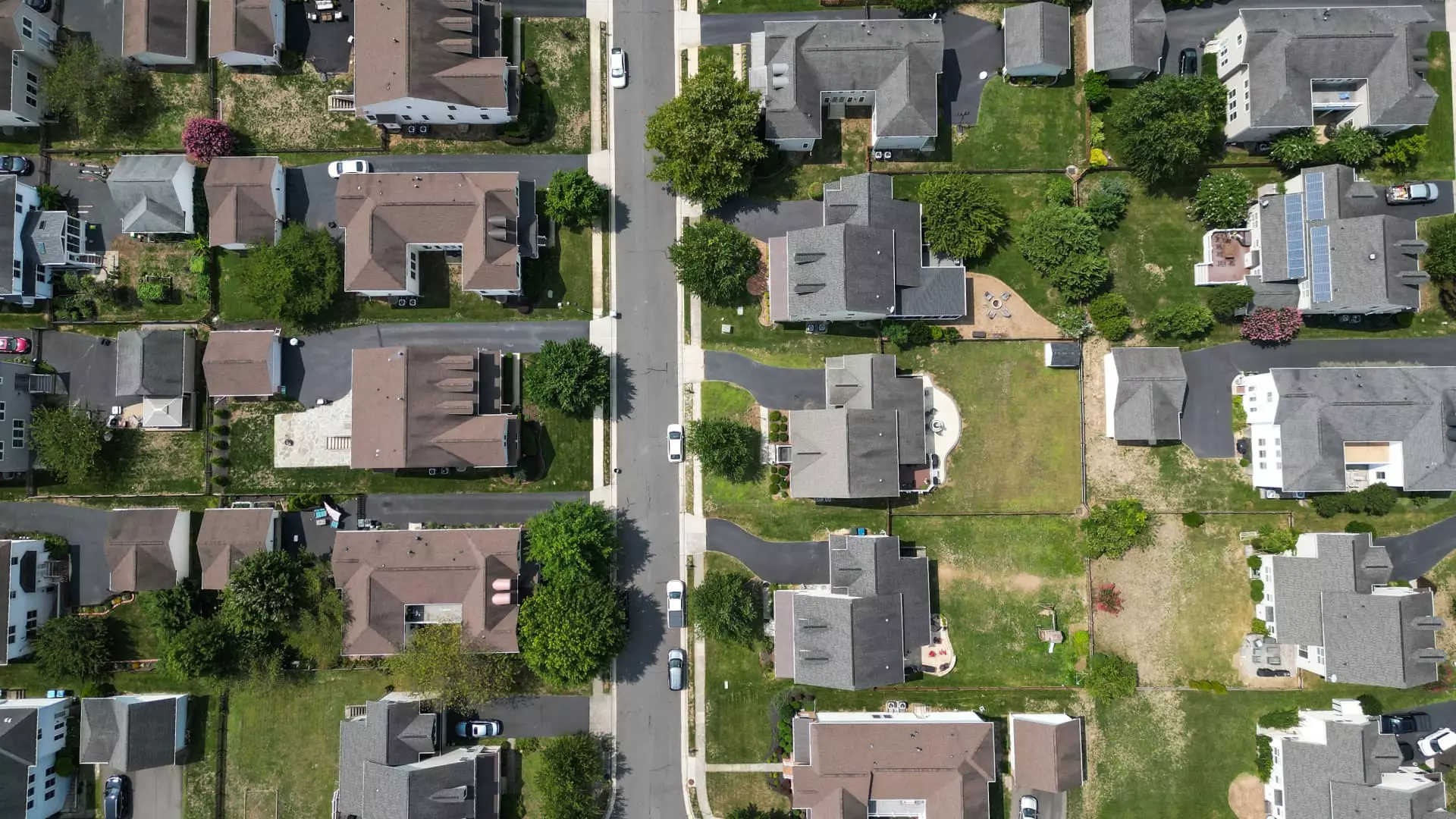Mortgage rates are not just numbers on a chart; they represent the heartbeat of the housing market, a market that is becoming increasingly unpredictable. This week, we’ve witnessed an alarming rise in the average rate for a 30-year fixed mortgage, which surged to 6.85%. Such fluctuations are distressing, particularly when one considers the broader implications for homebuyers and the economy as a whole. Rates didn’t just rise; they effectively reversed the positive momentum gained in the preceding weeks after a temporary drop in response to rising economic fears tied to global tariffs. This volatility isn’t merely a case of numbers; it’s a reflection of deeper economic currents that ought to concern anyone interested in homeownership or real estate investment.
The Economic Ripple Effect
The last week has made one thing abundantly clear: Mortgage rates are intricately tied to market sentiment and broader economic indicators. Following President Trump’s announcement about global tariffs, the market saw both panic and opportunity. When uncertainty reigns, investors often flock to the safety of bonds, and thus bond yields plunge. Yet, this isn’t a sustainable solution—it’s a band-aid on a much larger wound. The bond market recovered swiftly as officials hinted at negotiations regarding tariffs, which allowed mortgage rates to bounce back just as rapidly as they had fallen. As Matthew Graham from Mortgage News Daily succinctly puts it, “the bottom line, rates took a lead off last week as economic fears surged.” The inherent danger lies in this on-and-off mechanism, which not only destabilizes financial markets but also places enormous pressure on potential homebuyers.
Homebuyers: The Challenging Landscape
For individuals dreaming of homeownership, the current landscape appears daunting. While the increase in homes available for sale may seem like good news, the reality is stark. Persistently high home prices combined with climbing mortgage rates create an atmosphere of uncertainty that tends to freeze buyers in their tracks. Economists, like Danielle Hale, highlight this juxtaposition, as “high cost coupled with growing economic concerns suggest a sluggish response from buyers.” In a market where rising interest rates diminish the allure of homebuying, the struggle to purchase a home becomes not just a financial decision but a psychological battle as well.
The Disconnect Between Rates and Sales
It is alarming to observe that despite a brief drop in mortgage rates earlier this year, pending home sales only saw a modest 2% increase, with overall sales still trailing 3.6% under the figures from the previous year. The disparity between lowered rates and stagnated sales indicates a substantial disconnect in the market. Lawrence Yun, chief economist at the National Association of Realtors, emphasizes that “a meaningful decline in mortgage rates would help both demand and supply.” This statement raises questions regarding the efficacy of the Federal Reserve’s monetary policies. If rates can climb again even after slight decreases, what does that mean for future economic stability?
Looking Ahead: The Danger of Inaction
The volatility surrounding mortgage rates underscores an urgent need for proactive measures in both government fiscal strategies and consumer awareness. With key economic reports such as the consumer price index on the horizon, there’s a collective holding of breath as the market braces for fresh data that could influence rates once more. This is no small matter; real lives and dreams hang in the balance. A burgeoning homebuyer under the weight of rising borrowing costs may choose to hold off, creating further stagnation in an already sluggish market.
From a center-right perspective, one cannot help but argue that a more transparent and stable economic environment must be fostered. Policymakers need to prioritize creating frameworks that ensure homeownership remains attainable, and that mortgages don’t become another casualty of economic volatility. It’s time for deliberate actions, and those involved in real estate, whether they be buyers or investors, need to take this message to heart. The time for complacency is over; vigilance in this housing market is essential as we navigate these treacherous waters together.

